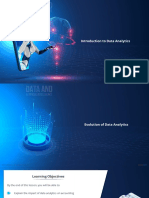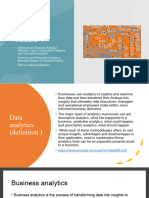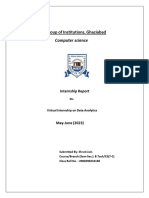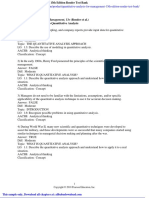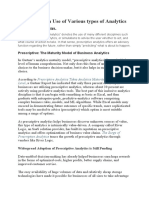0% found this document useful (0 votes)
63 views55 pagesEvolution of Data Analytics
The document outlines the evolution and importance of data analytics in accounting, emphasizing its role in improving decision-making and operational efficiency. It details the data analytics life cycle, types of analytics, and their respective benefits, including cost reduction and enhanced customer insights. Key takeaways include the process of data analytics and its application in various business contexts, particularly in addressing challenges faced by traditional accounting methods.
Uploaded by
ngocchauct2004Copyright
© © All Rights Reserved
We take content rights seriously. If you suspect this is your content, claim it here.
Available Formats
Download as PDF, TXT or read online on Scribd
0% found this document useful (0 votes)
63 views55 pagesEvolution of Data Analytics
The document outlines the evolution and importance of data analytics in accounting, emphasizing its role in improving decision-making and operational efficiency. It details the data analytics life cycle, types of analytics, and their respective benefits, including cost reduction and enhanced customer insights. Key takeaways include the process of data analytics and its application in various business contexts, particularly in addressing challenges faced by traditional accounting methods.
Uploaded by
ngocchauct2004Copyright
© © All Rights Reserved
We take content rights seriously. If you suspect this is your content, claim it here.
Available Formats
Download as PDF, TXT or read online on Scribd
/ 55

